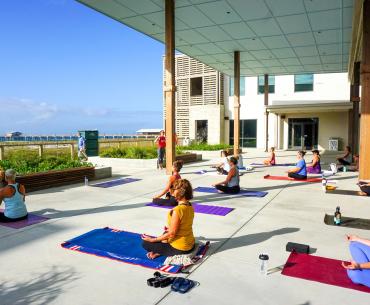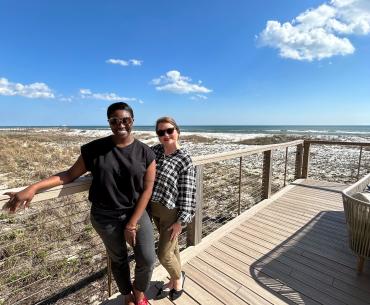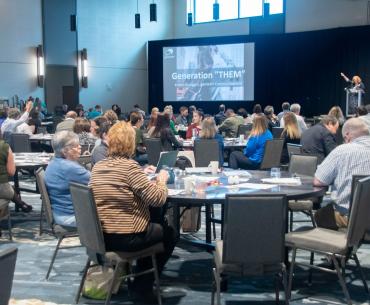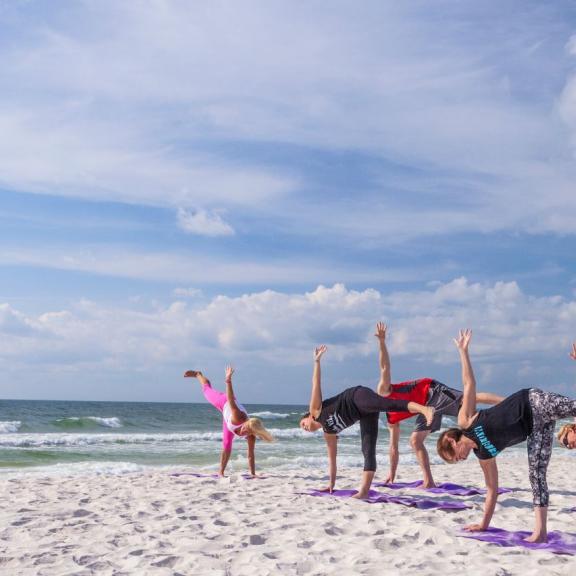
Maintaining Work-Life Balance
In Gulf Shores & Orange Beach
It comes as no surprise that the meeting professional and event planner job can be quite stressful. You have to manage everything from speakers and hotel management to having the right food for the right people and organizing accommodations. The list of tasks never seems to end! The key thing is that you can’t be effective if you are stressed and overwhelmed, so let’s start there.

Maintaining Sanity for You
As a meeting professional, one of the most challenging words to get comfortable with is no. We understand how hard this can be as you dedicate so much of your life to your groups and events, but if you don’t take the time to take care of yourself, there won’t be any of you left to help them!
Here are two self-care suggestions to consider:
- Schedule a self-care day monthly (or a half-day if you feel too guilty) and turn off the phone and computer. Do something that re-energizes you, such as a massage, spa day, lunch with friends, etc. Think of this like plugging your phone in to charge it – you are re-charging YOURSELF!
- Protect this time on your calendar. It’s one thing to schedule this time for you and another to make sure it takes priority when the inevitable conflict occurs.

Hydration…Yes, Again
From a personal health perspective, you already know how important staying hydrated is, especially during a meeting at the beach. But are you doing it? The typical daily water target of half your body weight in ounces is a great place to start, but the key is to implement this to drink water throughout the day. Make sure it’s purified water, as you want to help your body to detoxify. Either use a filter, or your body will become the filter, making it work harder to keep up.
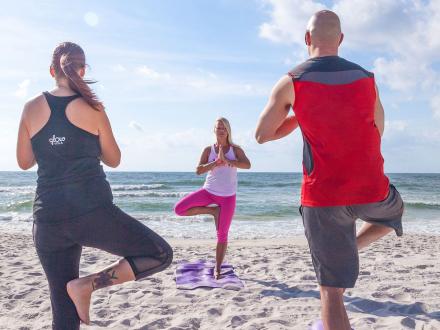
Proper Breathing Techniques
You would be surprised at how good a couple of deep breaths can be for your body! Proper breathing means that you are breathing deeply, down below your navel (you might put your hand there as you practice), while keeping your chest relatively still. Try inhaling for 4 seconds, hold for 4 seconds and exhale for 4 seconds. This will help to activate the calming side of your nervous system (called the parasympathetic nervous system) and reduce stress in a big way. In fact, all the best stress reduction systems – including practices such as tai chi, yoga and qi gong – have deep breathing at their core.

Use the Best Fuel Possible
Most people who own an expensive car would never think of putting the cheapest fuel in it. Your body is WAY more valuable than any car, so make sure you give it the best fuel possible. We understand there are times when it makes sense to cheat and eat the not-so-good-for-you foods, and that’s OK . . . as long as it’s in moderation.
Shoot for the 80/20 rule (80% of the time, eating as healthy as you can). What does that look like, given our culture’s fascination with the diet trend of the month? In general, eat things that grow. The Mediterranean diet has stood the test of time. The trick is to eat:
- Quality fruits and vegetables (organic where possible).
- Whole grains in very small amounts only.
- Healthy natural fats such as coconut oil, avocado, olive oil, walnuts and macadamia nuts. Also, be sure to get your omega-3 essential fatty acids from fish, flax or other sources. These fats are crucial to building healthy cells in your body. (Tip: Whenever you see the word “essential” with regard to nutrition, it means your body can’t make it on its own, so you need to incorporate it into your diet.)
- We don’t need as much protein as you might think (depending on your lifestyle) but do eat it daily in the form of beans, nuts, lentils (if vegetarian) and/or good-quality meats (organic, grass-fed) and eggs.

Your body is always trying to heal itself. All. The. Time. As a busy worker bee, you must give yourself time to relax! Work-life balance is possible, so make it a priority to ensure a long, healthy life. Our team is always available to help you with all of your meeting or conference planning needs as well!
